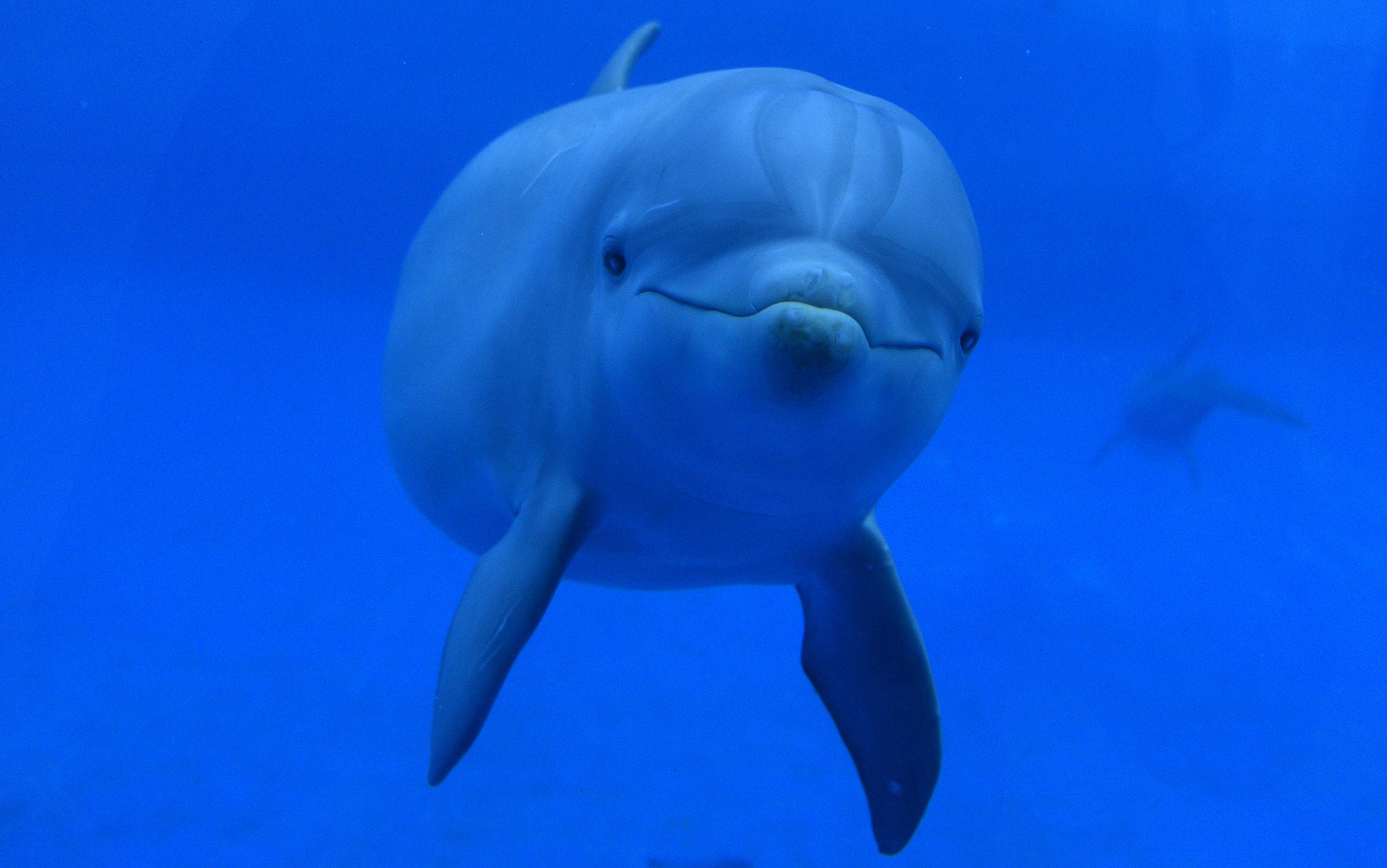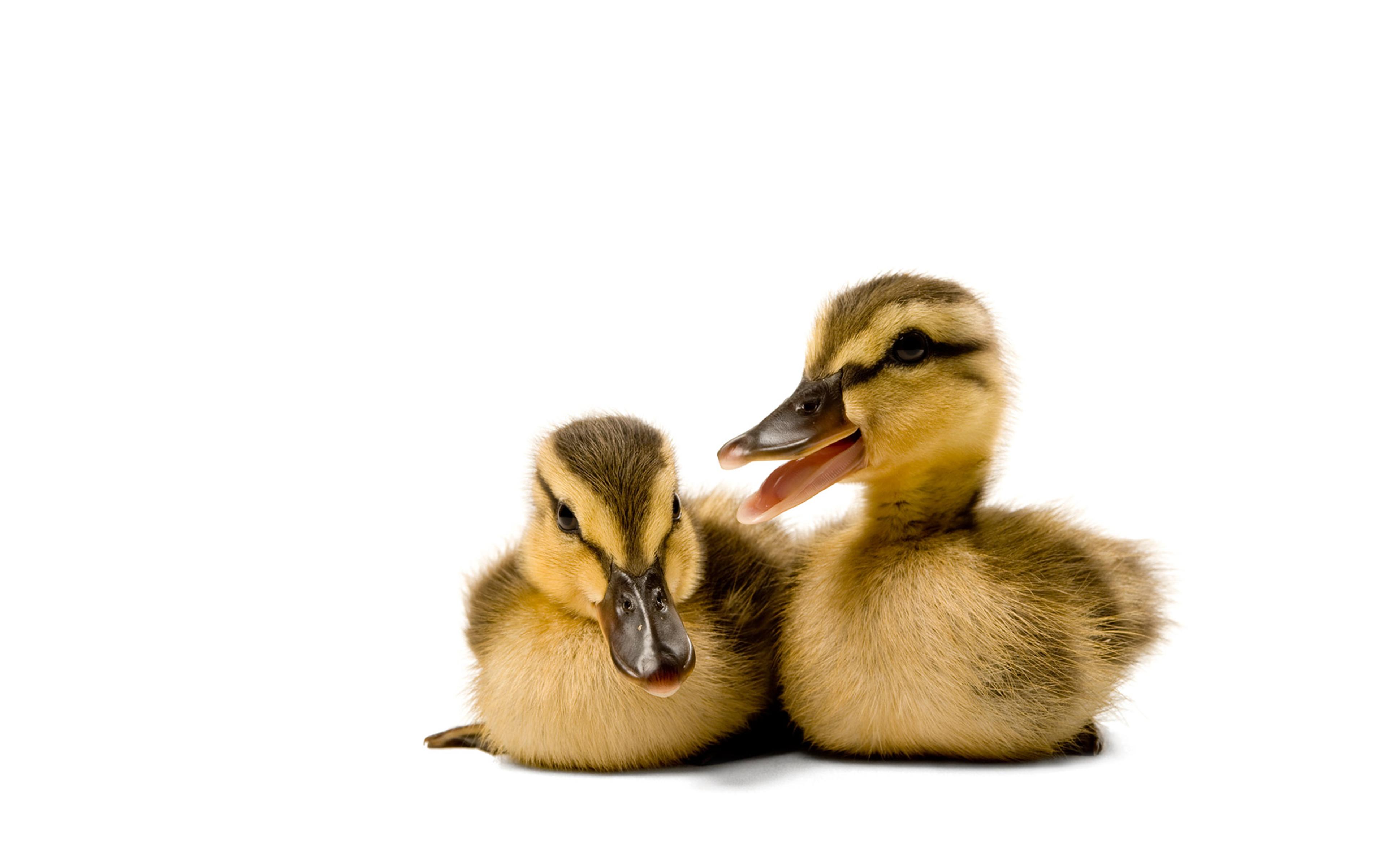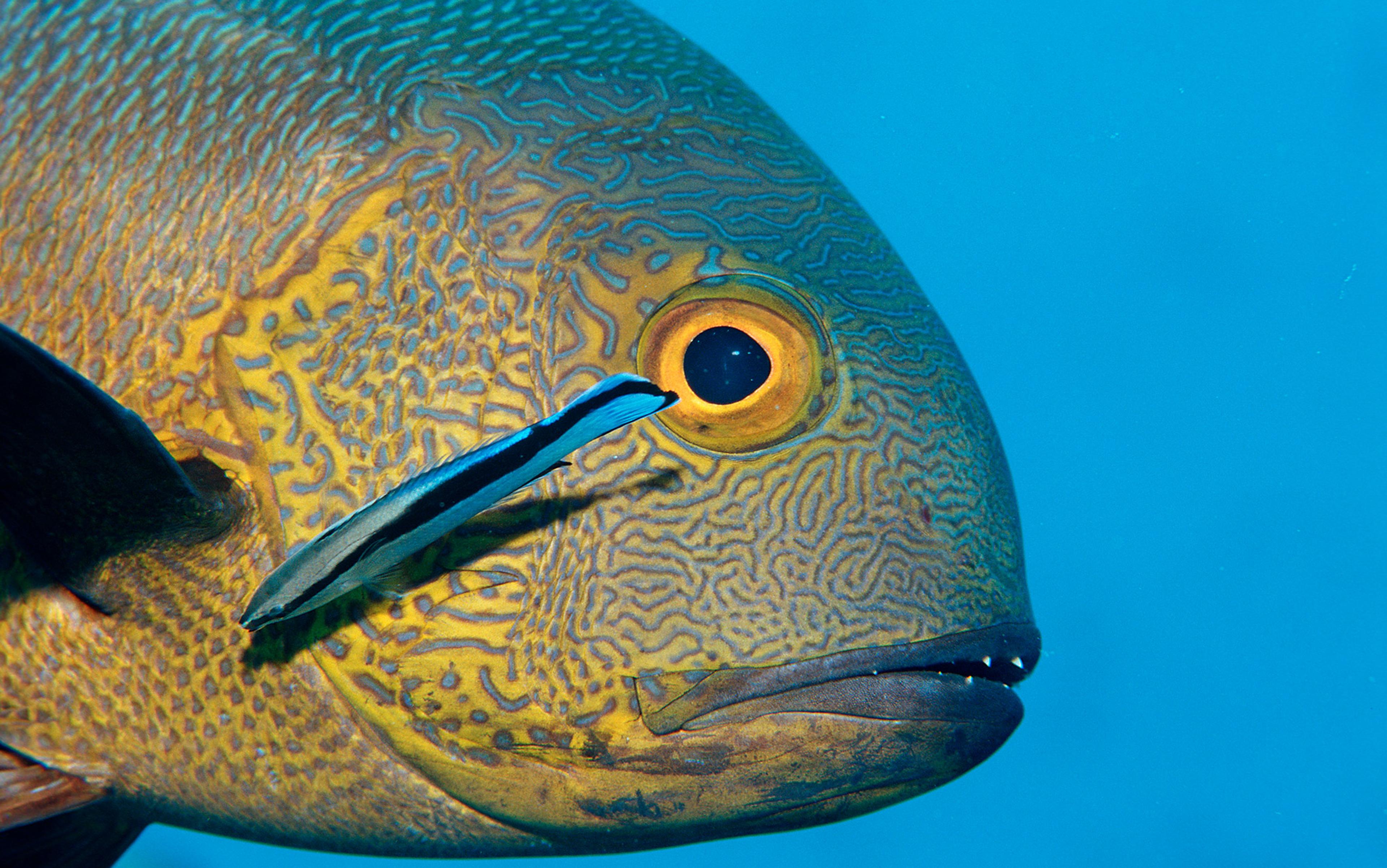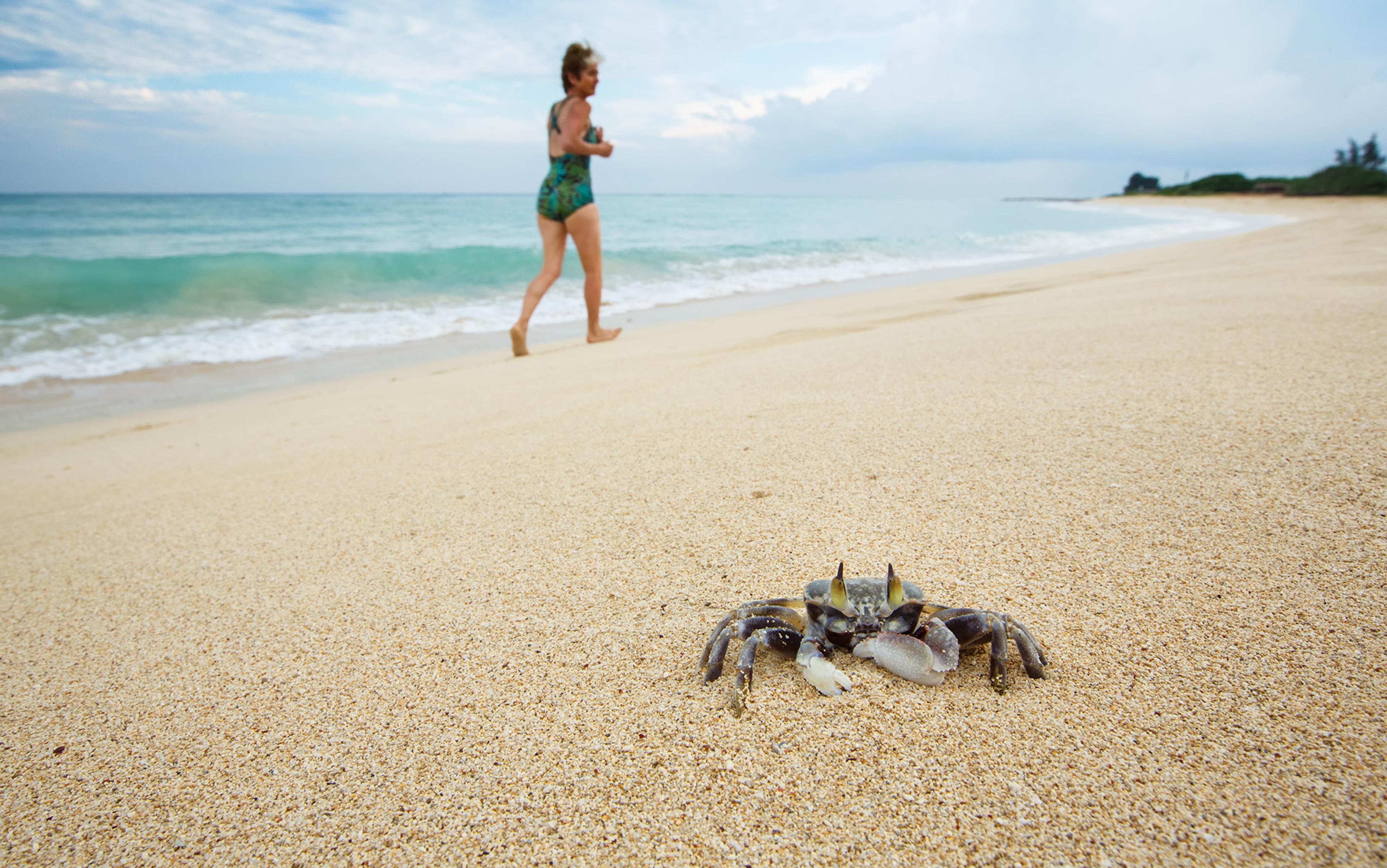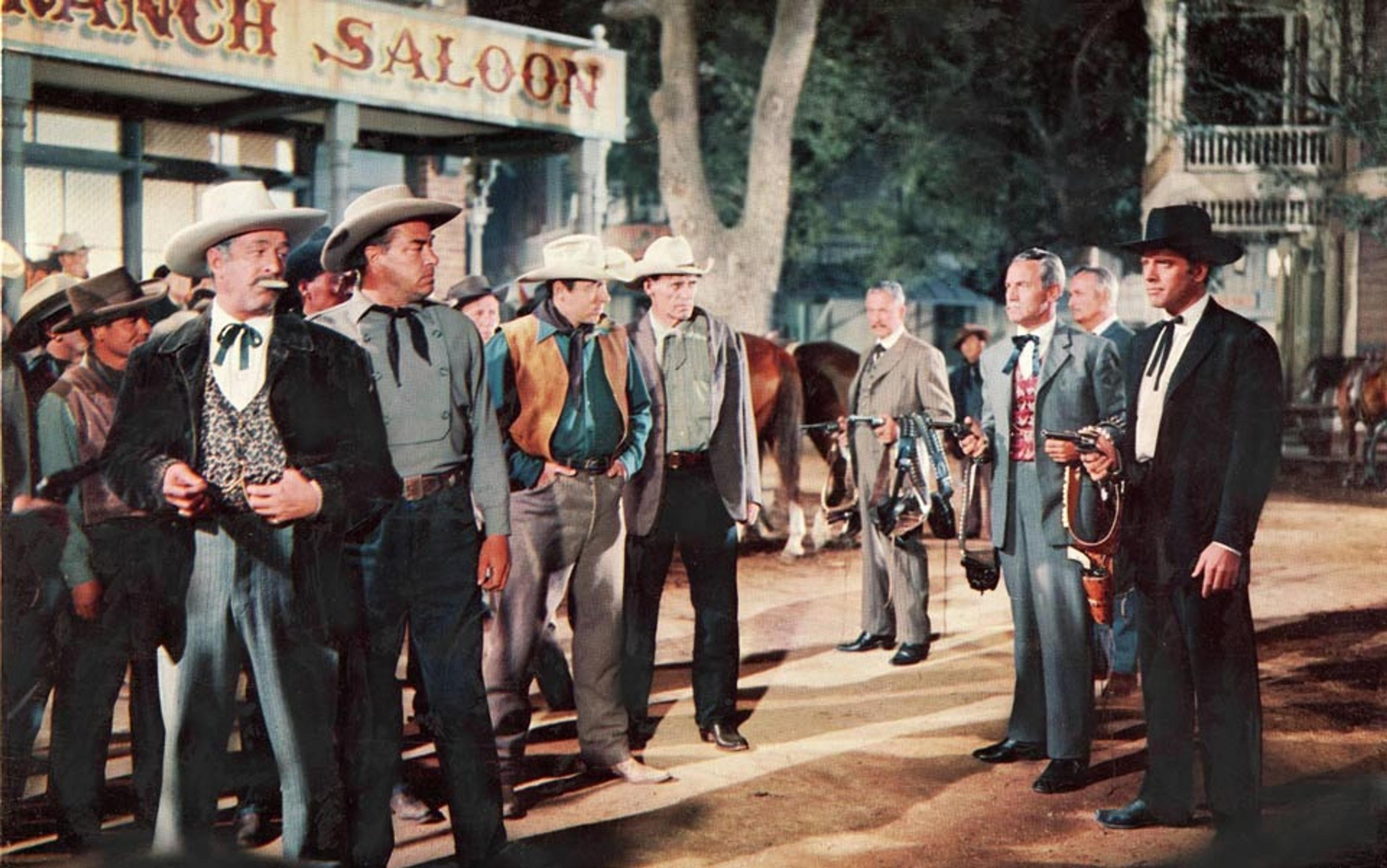When our collie, Buckaroo, was four months old, he began barking at his reflection in our glass patio door every evening, doing his best to alert us to this unknown, bold little pup outside. Of course, the reflected dog didn’t back away, so Buck lunged at him and scratched the door jamb – actions that did get our attention. We would pull him away, laughing, and tell him he was wrong – a dog wasn’t on our deck. Buck studied our faces with a perplexed expression. Anyone could see the dog was still there. Why didn’t we chase it away? Sometimes, we opened the door to show him he was mistaken. Of course, as soon as we closed it, the strange dog reappeared. The reflected dog also had the irritating habit of mirroring all of Buck’s actions. In other situations with new dogs, Buck would have made a series of welcoming gestures, perhaps wagging his tail, rolling his eyes and making deep play bows. We never saw him make a single attempt to befriend this ‘Now I’m here; now I’m not’ canine. He tried only to make him go away.
At some point, when he was a few months older, Buck ceased being interested in his reflection. Undoubtedly, he still saw the dog, but finally accepted that it wasn’t going to leave. Apparently, he decided that it wasn’t going to try to come into the house either, so he didn’t need to bark and scratch. Perhaps Buck had concluded it was simply better to ignore this apparition. That’s our best guess because, of course, we don’t actually know what he thought about his mirror-twin – we can make only hunches based on his behaviour.
Many animals behave in a similar manner the first time they see themselves in a mirror. Some cat owners have videoed their pets leaping away in wide-eyed alarm, even doing back flips, after spotting their reflections. Monkeys, chimpanzees and many species of birds all initially interpret their mirror image as a stranger, and respond by attacking or threatening it. Even human children under the age of two don’t initially recognise their reflections; like most other species, they react as if seeing another child, one who seems bent on playing a novel form of hide-and-seek. But, at least for most children raised in Western societies, something changes at about age two, and they begin to understand that they are looking at themselves. (It helps that their parents likely often hold them in front of mirrors, playfully asking: ‘Who is that? … That’s you!’) At this age, neuropsychologists say that the structure and function of children’s prefrontal cortex also begins to mature, and they begin to perceive the ‘self’ as a separate being. Two-year-old toddlers also begin to use personal pronouns, play self-consciously, and smile when they succeed at solving challenging tasks – all signs that they are becoming self-aware.
Although scientists don’t yet know where self-awareness resides in the brain or how firing neurons give rise to an ‘I’, they do agree that it is essential to our mental complexity and to becoming empathetic. It’s the mental feeling of being an ‘I’, a separate individual with a running narrative of all you’re doing, have done and will do in the future. Self-awareness also enables humans to model mentally the minds of others, a skill that’s key to a range of social strategies from sympathy to deception.
Self-awareness is not, however, the same as being conscious – which is commonly defined as being aware of one’s body and surrounding environment, a mental trait many animals share with us. Indeed in 2012, a prominent international group of neuroscientists, ethologists and psychologists issued what’s been called ‘The Cambridge Declaration on Consciousness’. It asserted that
Convergent evidence indicates that nonhuman animals have the neuroanatomical, neurochemical and neurophysiological substrates of conscious states along with the capacity to exhibit intentional behaviours. Consequently, the weight of evidence indicates that humans are not unique in possessing the neurological substrates that generate consciousness. Nonhuman animals, including all mammals and birds, and many other creatures, including octopuses, also possess these neurological substrates.
But being conscious of one’s body does not mean that an animal also has a capacity for introspection – a key part of being self-aware. While consciousness is being aware of one’s body, self-awareness takes the sensation one step further – you recognise that you are aware of your awareness.
Surely other animals possess this sensation and are socially adept? Many seem to go about their lives with a sense of purpose; it’s difficult to imagine they don’t have a mental image of themselves as they engage in life. Isn’t there ‘anyone inside’?, fretted the late Vincent Dethier, a psychologist at the University of Pennsylvania who spent 18 years attempting (and failing) to show that blowflies could remember. He knew that most people regarded the tiny flies only as ‘little machines in a deep sleep’, but his years of observing their ‘mute performances’ and ‘staring eyes’ through his microscope made him think the flies might have some sense of themselves – a feeling most of us have about our pet dogs and cats, too.
How can we test for this mental ability? Is there a way to glimpse self-awareness in our minds and those of other animals? Perhaps. Using the mirror self-recognition (MSR) test, scientists have established that chimpanzees and orangutans, at least, are self-aware. The evolutionary psychologist Gordon Gallup, now an emeritus professor at the University at Albany in New York, invented the test in 1970. His basic conceit was that, when humans look at our mirrored reflections, we know that we are looking at ourselves; and we know that because we have a sense of self, an inner ‘I’ – not simply an awareness of our physical body. If we glance in a mirror, we recognise ourselves; and if we see a spot of mustard on our chin, we rub it off. The test essentially requires other animals to do the same thing: look in a mirror and touch or rub a spot of odourless dye that researchers have surreptitiously applied to their foreheads or ears. Nearly 50 years after Gallup published his groundbreaking paper describing this test, it’s come to be regarded as the gold standard for assessing self-awareness. It’s been administered to dozens of other species from elephants to dolphins to gorillas, giant pandas, dogs, cats, birds, manta rays, fish and horses. Even a robot.
And while some contend that certain species, such as dolphins, elephants and European magpies, have passed, Gallup disagrees. ‘I do have an open mind, and am not against other species, but none has succeeded so far,’ he says. To him, this is an indication that the test reveals a clear dividing line between animals with minds and those that are mindless. However, a growing number of scientists say that the fault lies not with the animals, but with the test. Its strict exclusionary conclusion is out of step with today’s evolutionary approach to animal cognition, they say. As Frans de Waal, a primatologist at Emory University in Georgia, puts it: ‘Complex cognitive capacities evolve bottom-up in small incremental steps from more basic traits shared across a wide range of species.’ Like other cognitive talents such as language, our self-awareness almost certainly didn’t appear out of the blue; there must be signs of some aspects of it in other species. But as currently administered, the test – and Gallup, its primary evaluator – is unforgiving. Since it’s designed for animals that rely on their visual sense and have hands, very few can pass it.
‘Honestly, the test sucks,’ says Alex Jordan, an evolutionary biologist and principle investigator at the Department of Collective Behaviour at the Max Planck Institute in Germany. Jordan is a co-author of a recent study in PLOS Biology evaluating the behaviours of the cleaner wrasse, a small fish that took the test. Jordan and his colleagues argue that the fish passed the test, but that this doesn’t mean that cleaner wrasses are self-aware. ‘It [the mirror test] may be testing for other things, such as associated learning and conflict resolution. But is it testing for self-awareness?’ Jordan asks. ‘No – that’s a stretch.’
‘The mirror test was never ideal or wholly adequate; it’s just our best attempt so far,’ agrees Alexandra Horowitz, an animal cognition scientist at Barnard College in New York, who considers it a very ‘human or primate-centric test’ designed for animals that rely heavily on vision. ‘To find out what’s really going on in an animal’s mind, you have to consider their naturalistic behaviours and what’s important to them,’ she explains. ‘For dogs, that would be scent. They learn about other dogs by smelling their rear ends, so I took the key elements from Gallup’s test and adjusted it for dogs.’ Her ‘sniff test of self-recognition’ used ‘olfactory mirrors’ to see if dogs recognised themselves. In this test, dogs were allowed to sniff urine placed in containers. Some containers held only the dog’s urine; others had that dog’s urine mixed with another’s. Dogs spent more time sniffing the mixtures – a sign, Horowitz says, that they knew what they should smell like, just as we know what we should look like when we gaze in a mirror.
The chimps looked in the mirror and touched the red marks; some smelled their fingers after scratching the dye
Gallup also had no idea if chimpanzees could recognise their mirrored images when in 1970 he first tested four juvenile, captive chimpanzees at Tulane University’s Delta Regional Primate Research Center, Louisiana. First, he placed full-length mirrors outside the cages of the four apes, who were living alone. Initially, they reacted as our collie did: they barked and made threatening gestures at their reflections. However, after a few days, they stopped these behaviours. Instead, they used the mirrors as tools to look at and investigate themselves: they made faces, blew bubbles, picked their noses, cleaned food bits from their teeth, and studied their tongues, throats and genitals.
Had they learned to recognise themselves? To find out, Gallup anaesthetised the chimpanzees and applied a dot of red dye to an eyebrow ridge and to the top of an ear on each animal. The apes were returned to their cages. When they awoke and looked at their images in the mirrors, they touched the red marks; some also looked at and smelled their fingers after scratching at the dye. Gallup concluded that the chimpanzees were indeed self-aware. He also marked the eyebrows and ears of two other chimpanzees who had not spent time with mirrors; when they woke up and saw their reflection, they reacted as if they were confronting another, strange chimpanzee. They did not touch the marks on their faces; clearly an important part of the test was letting the animal learn about mirrors.
Gallup next tested eight adult macaques and two adult rhesus monkeys; some were allowed three weeks with the mirrors prior to being marked. But no matter how much time they were given, none of the monkeys understood they were looking at their own reflection; they all remained hostile to it. (Indeed, some macaques lived with mirrors for 17 years and never figured out who the strange monkeys were; yet they did understand a mirror’s properties – for instance, they quickly turned to face people they spotted in the mirror.) After being marked with the dots of red dye, none of them used the mirror to pick at these.
Gallup concluded that he’d discovered a fairly simple method researchers could use to determine if another being had a sense of self-awareness and all the attendant mental skills. ‘Recognition of one’s own reflection would seem to require a rather advanced form of intellect,’ Gallup wrote in his 1970 landmark paper in Science, describing the test and results. ‘[T]hese data would seem to qualify as the first experimental demonstration of a self-concept in a subhuman form.’ Further, because the monkeys’ and apes’ responses were so different, Gallup believed he had discovered ‘a qualitative psychological difference among primates … [T]he capacity for self-recognition may not extend below man and the great apes.’
Since publishing his study, Gallup and others have tested various animals, from more primates to chickens. But, according to Gallup, only orangutans and chimpanzees have successfully passed. Why? Gallup suspects it’s because most animals lack the ability ‘to conceive of themselves’, as he wrote in Scientific American in 1998. And since they do not have a sense of an ‘I’, they cannot understand that they are looking at themselves when they see their reflection in a mirror.
Why does this matter? ‘There’s no obvious adaptive value to being able to recognise yourself in a mirror,’ says Gallup. In other words, it’s not like having a beautiful singing voice or an ability to locate calorie-rich foods – skills that will likely help you secure a mate and pass on your genes. Instead, he argues, it’s indicative of a rare and rich mental life, of having a mind. ‘If you can do it, it means you can become the object of your own attention,’ Gallup explains. ‘You can think about yourself and your past, present and future experiences – and comparable experiences in other people. It means that you recognise that other people have minds, and wants and desires. That leads to the abilities to empathise and deceive’ – talents that some regard as the capstones of social cognition.
Gallup’s mirror test results drew a line separating humans and two closely related primate species from the rest of the animal kingdom. But, increasingly, cognitive scientists reject the idea of a strict mental divide between humans, apes and all other animals, particularly when many species demonstrate other highly intelligent behaviours, often of a social nature.
One dolphin rubbed the mark against the aquarium wall; he next returned to the mirror and studied the spot again
Common bottlenose dolphins, for instance, live in complex, ever-changing societies that depend on knowing who is a trustworthy ally and who is not. Their Machiavellian smarts suggest that they have rich, inner mental lives, and so most researchers were not surprised when dolphins tested at the New York Aquarium in Brooklyn and the National Aquarium in Baltimore, Maryland reacted almost exactly like the chimpanzees in Gallup’s original study. At first, they responded to their reflections as if they had encountered strangers. Gradually, they seemed to realise they were looking at their own images, and began to use the mirror as had the chimpanzees: they stood in front of it, blew different types of bubbles, opened their mouths wider and wider to peer at their teeth, tongues and throats, and positioned themselves so they could inspect their anal/genital areas. After the scientists drew black marks on the dolphins’ shoulder area, the marine mammals spent more time trying to manoeuvre into a position to look at that body part in the mirror. Lacking hands, they could not rub off the marks, but one dolphin did rub the marked area against the wall of the aquarium; he next returned to the mirror and studied the spot again. But because the dolphins did not pick at the mark, Gallup says they failed.
Asian elephants, also highly social beings, behaved as if they understood they were looking at themselves when they were given an eight-foot-by-eight-foot mirror reflecting their entire body. Some soon began spending time in front of it, watching their reflections as they chewed food, tossed their trunks, put their trunks in their mouths and pulled their ears. But the results of the mark test were inconclusive. One elephant did touch the white X the scientists drew on her head with her trunk; others ignored it, perhaps because elephants enjoy rolling in the dirt or blowing dust over their bodies, so a mark on their bodies doesn’t matter to them as they are used to being dirty, these researchers said. Still, they are certain that elephants passed the mirror test – while Gallup, again, is not.
Gorillas haven’t passed, perhaps because the test requires looking at oneself directly, and staring is not an acceptable behaviour in gorilla society. Gallup and his colleagues attempted to overcome this problem by supplying captive gorillas with special angled mirrors, but the animals still did not pass the test. They would not look at the marks on their faces, even though they studied other red marks drawn on their wrists (although not in the mirror) – and so apparently understood that the marks were new.
Some scientists (but not Gallup) accept that European magpies, another social species known for its cognitive smarts, have passed the test. In this case, researchers affixed a small yellow sticker to the birds’ feathers at a spot they could see only by looking in a mirror. When they saw the dot, the magpies vigorously pecked at it. ‘I was at first convinced by this one,’ Gallup says. But other studies now suggest that the birds are actually responding to the tactile sensation of the sticker, and he’s lost his enthusiasm for the study.
The latest contender is the tiny cleaner wrasse, a bright-blue coral reef-dwelling fish that boldly cleans dead skin and removes parasites from other fish. Jordan and his colleagues decided to test the wrasse after their first MSR study using cichlids, fish that inhabit African lakes, failed. (‘I’m not sure if they understood what a mirror is,’ Jordan said about the cichlids. ‘Or they may, but they don’t care. They faced their reflections aggressively, but they never tried to remove the mark.’) Jordan next turned to the cleaner wrasse, since it is a species that ‘would care about a mark. Its entire sensory system is about detecting marks [usually parasites] on other fish and doing something about them,’ he said. Cleaner wrasses are also social, use tactical deception and reconciliation to manage their relationships, and recognise the faces of other fish – all cognitive skills that can be correlated with the ability for self-recognition, notes Jordan. In terms of ‘perceptual and cognitive abilities’, he adds, fishes’ cognitive talents might be more similar to those of humans and apes than is currently recognised. Thus, giving fish the gold standard test of social intelligence – the mirror test – might reveal more about their hidden talents.
Jordan and his colleagues set up aquariums with mirrors – the first mirrors the wrasses had seen – and watched as the fish first attacked their reflections, biting at them as if they were strangers. They chose to use only females so that the fish would not display courtship behaviours. After seven days, the fish stopped biting at their images, and began behaving oddly in front of the mirror, for instance, swimming upsidedown – something the scientists had never seen wrasses do before, and a behaviour they exhibited only in front of the mirror. They did this repeatedly, and the researchers decided that the fish were using the mirrors to inspect themselves.
For the mark part of the test, the scientists anaesthetised the wrasses and injected a small amount of brown pigment beneath the throats of four of them; the mark resembled a parasite. Others were given transparent sham injections; and others were left unmarked. The marked fish could see their ‘parasites’ only with the aid of the mirror; after spotting these, three of the four scraped their throats on the bottom of the aquarium – an action that Jordan notes would be regarded as ‘self-directed behaviour’ in a mammal. In his eyes, the fish physically recognised themselves, but did so without being self-aware. ‘They did pass,’ Jordan says, ‘but wrasses don’t have the other cognitive traits, such as Theory of Mind [the understanding that other beings have minds], that supposedly go with passing the test.’ Jordan concludes that ‘the test is merely one more demonstration of human arrogance. We have this special “I” in our head, and that’s what makes us sentient. But the test is flawed; it’s really designed only for humans and apes, not for other taxa.’
There is a continuum to the mirror test: it makes sense to investigate this, instead of looking at it as a pass-fail exam
Meanwhile, de Waal argues that ‘all animals need a self-concept’. Monkeys, for instance, must know their own weight before leaping onto a tree branch, and be aware of their physical fitness and strength before fighting another monkey. And most – perhaps all – animals need to know something about themselves, their fellows, and their role in their societies in order to get along. Perhaps it’s time, de Waal suggests, to find tests that don’t rely solely on vision to investigate other animals’ self-awareness. It’s a ‘gross simplification to lump all animals’ that fail the mirror test into a ‘single cognitive category’ when they respond so differently to mirrors, he adds. Small-brained birds, such as robins, will repeatedly attack their reflected image, unable to let go of the notion that it’s an invader; while cats and dogs typically choose to ignore the stranger in the mirror, and others, notably monkeys and African grey parrots, can use mirrors to find objects that are out of sight. Nor do all monkeys treat their reflections as strangers. There is an as-yet unrecognised continuum to the MSR test, and it would make sense to investigate this, says de Waal, instead of looking at it simply as a pass-fail exam.
We also still have much to learn about how human children perceive their reflected images. Scientists have recently discovered that children in Fiji and Kenya don’t recognise their mirrored selves at age two, as Western children normally do, or even at age six. (But even Western children who do recognise themselves in mirrors don’t recognise their images in videos that were made a few months before they took the mirror test.) When told they were looking at themselves, the Kenyan and Fijian children reacted with silence, researchers reported in 2010. That’s likely because non-Western children are raised to think of themselves as part of a group, the scientists explained. When they saw themselves in a mirror with a small yellow post-it note on their foreheads – which made them look different from their friends – they did not touch or rub it. Instead, they were quiet and stunned. They were used to being told what to do, the scientists said, and expected to learn by watching rather than by asking questions, and they simply did not know what an acceptable response might be.
Yet comparative cognition scientists largely agree that most animals are conscious and thinking beings, capable of taking in information, making decisions based on this, and then acting on it. It’s simply that next step – the ability to think about their own thoughts – that remains elusive, something we have not yet been able to capture or measure.
So does the mirror test actually reveal anything about our mental complexity and sense of self-awareness? Is the sensation of self simply a byproduct of how our brains and those of our closest relatives evolved in response to similar challenges? And is it worthwhile to continue testing other species; can we learn anything by doing so? Lori Marino, a neuroscientist and director of the Kimmela Center for Animal Advocacy in Utah – who was one of Gallup’s students, and also participated on some of the first mirror tests with dolphins – thinks so, and remains an advocate. Since ‘self-awareness is not a very tractable phenomenon’, it’s difficult for us to ‘create probes and tests’ that are easy to administer and understand, says Marino. The mirror test ‘does capture something that is related to self-awareness and may be the best “objective” measure we have. But I don’t think it’s tapping into some overly romanticised property present in some animals and absent in others.’
Indeed, Marino breaks with Gallup when animals don’t pass the test: she doesn’t think it means they lack self-awareness. All animals, she argues, are self-aware: ‘We just don’t know what it means to be self-aware and not pass the mirror test.’ And so until other tests of self-awareness that are appropriate for more species are devised, we are stuck with the one that works – and at least for us, adds de Waal, the mirror tests ‘are fun’.
